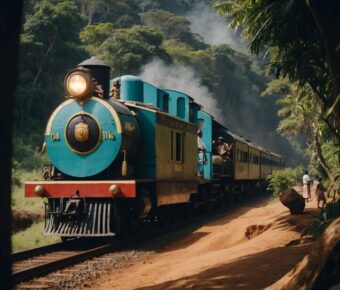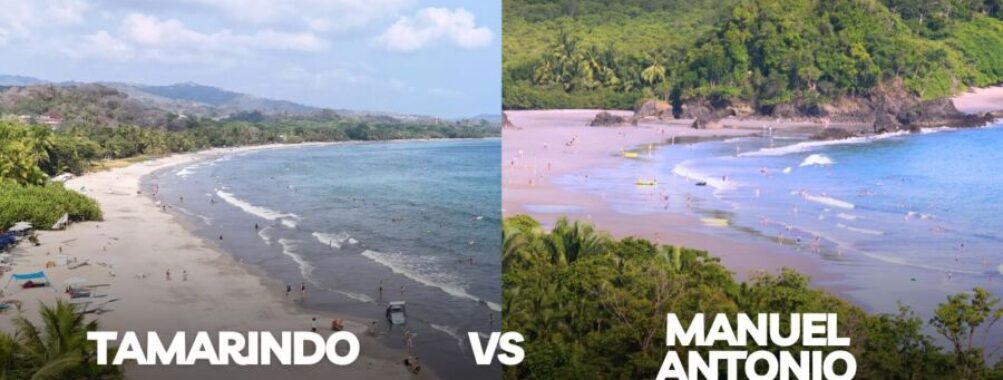
Tamarindo vs Manuel Antonio: 7 Key Differences to Know Before Booking Your Costa Rica Beach Vacation
Planning a Costa Rican getaway? Two popular Pacific coast destinations often top travelers’ lists: Tamarindo and Manuel Antonio. These stunning locations offer different experiences while showcasing Costa Rica’s natural beauty.
When choosing between Tamarindo and Manuel Antonio, your decision should depend on the beach experience you seek. Tamarindo offers wider sandy beaches ideal for surfing and a livelier, more “Americanized” atmosphere with abundant nightlife options. Meanwhile, Manuel Antonio features more secluded beaches framed by lush tropical forests, often described as the prettiest in the country, with calmer waters perfect for swimming.
Wildlife enthusiasts might prefer Manuel Antonio, where visitors have better opportunities to spot diverse animals, including squirrel monkeys, in a more lush, verdant setting. The national park provides a more authentic Costa Rican experience with its remarkable biodiversity, while Tamarindo caters more to those seeking beach parties and surfing adventures.
Contents
- Geographical Overview
- Location and Accessibility
- Climate and Best Time to Visit
- Leisure and Recreation
- Beach Activities and Water Sports
- Wildlife Encounters and Nature Tours
- Adventure and Exploration
- Accommodation Options
- Hotels and Resorts
- Cabins and Boutique Stays
- Dining and Nightlife
- Local Cuisine and Gourmet Experiences
- Bars and Evening Entertainment
- Cultural and Natural Significance
- National Park and Conservation Efforts
- Local Traditions and Community
- Practical Information for Tourists
- Travel and Transportation
- Health and Safety Tips
- Local Services and Amenities
- Frequently Asked Questions
- What are the key differences in wildlife and nature experiences between Tamarindo and Manuel Antonio?
- How do travel times and transportation options compare when traveling from Monteverde to Tamarindo versus Monteverde to Manuel Antonio?
- How do Tamarindo and Manuel Antonio differ in terms of beach quality and water activities?
- Can you compare the range of accommodations available in Manuel Antonio to those in Tamarindo?
- What distinguishes the nightlife and dining scenes when comparing Tamarindo to Manuel Antonio?
- How does the overall atmosphere and type of tourist experience in Manuel Antonio contrast with that of Tamarindo?
- More Travel Guides
Geographical Overview
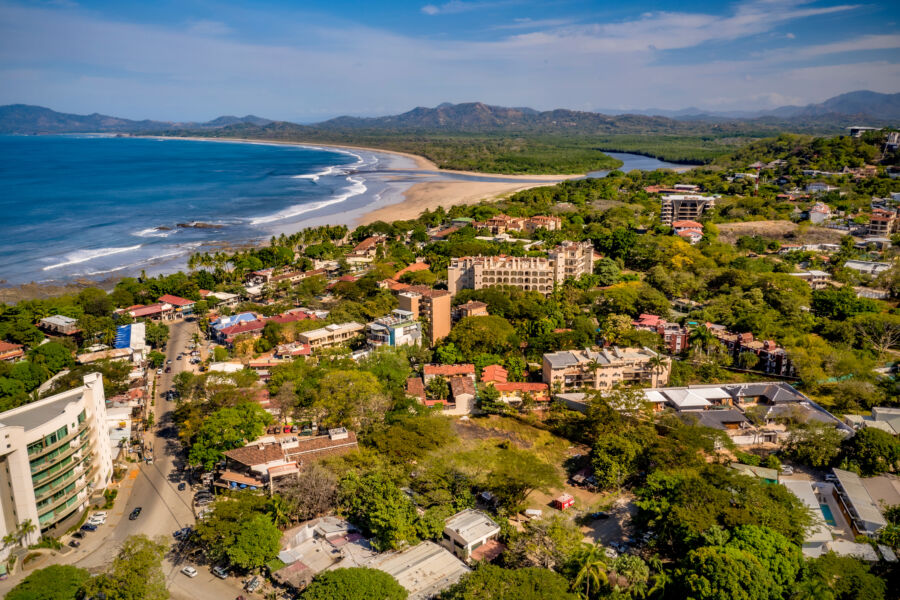
Tamarindo and Manuel Antonio occupy distinct regions along Costa Rica’s stunning Pacific coastline, each offering unique geographical advantages that shape the visitor experience. Their locations influence everything from travel logistics to the natural environments you’ll encounter.
Location and Accessibility

Tamarindo is on Costa Rica’s northwestern Pacific coast in Guanacaste province. It’s about a 75-minute drive from Liberia International Airport, making it one of the more accessible beach destinations for international travelers. If you’re coming from San José, prepare for a longer journey of approximately 5 hours by road.
Meanwhile, Manuel Antonio is located in the central Pacific region near the town of Quepos. It’s considerably closer to San José, with about a 3-hour drive from the capital.
This makes Manuel Antonio more convenient for travelers entering through Juan Santamaría International Airport in San José. Both destinations are reachable via public transportation or shuttle services, though renting a car gives you more flexibility to explore surrounding areas.
Climate and Best Time to Visit

Tamarindo experiences a distinct dry season from December to April, with almost no rainfall and plenty of sunshine. During these months, temperatures typically range from 75°F to 90°F (24-32°C). The region lies within Costa Rica’s tropical dry forest zone, creating a golden brown landscape during the peak dry season.
The wet season runs from May to November, with the heaviest rainfall in September and October. Even during rainy months, mornings are often sunny.
In contrast, Manuel Antonio has a more humid climate year-round. While it shares similar dry season months (December-April), it receives more overall precipitation than Tamarindo. The lush rainforest surrounding Manuel Antonio stays green throughout the year.
The best time to visit either destination depends on your preferences. The dry season offers reliable sunshine but comes with higher prices and crowds. Green season (May-November) brings occasional afternoon showers but fewer tourists and vibrant landscapes.
Leisure and Recreation

Tamarindo and Manuel Antonio offer incredible recreational opportunities catering to different travel styles. From thrilling water sports to peaceful nature encounters, each destination presents a mix of activities connecting visitors with Costa Rica’s natural beauty.
Beach Activities and Water Sports

Tamarindo shines as a premier surfing destination with consistent waves perfect for all skill levels. Beginners can take surfing lessons at Playa Tamarindo, while more experienced surfers head to nearby Playa Grande for challenging breaks.
Water sports enthusiasts find plenty to do beyond surfing. Kayaking through Tamarindo’s estuary offers a peaceful contrast to the ocean waves. Sport fishing trips are popular, with boats departing daily in search of mahi-mahi, sailfish, and marlin.
Meanwhile, Manuel Antonio’s calmer waters are ideal for snorkeling and swimming. The protected bays create perfect conditions for paddleboarding and kayaking around the stunning rock formations. Sailing tours along the coastline provide spectacular sunset views and opportunities to spot marine wildlife.
Wildlife Encounters and Nature Tours

Manuel Antonio National Park is a biodiversity hotspot where visitors can observe wildlife in their natural habitat. The park’s well-maintained trails wind through rainforest, teeming with monkeys, sloths, and colorful birds.
Guided tours enhance the experience as trained naturalists point out camouflaged creatures that most visitors would miss. The park is especially known for its squirrel monkey population – one of the few places to see this endangered species.
Tamarindo offers different but equally impressive wildlife experiences. The nearby Las Baulas National Park protects leatherback turtle nesting grounds. Seasonal night tours let visitors witness the ancient nesting ritual during the hatching season.
Estuary boat tours reveal another side of Tamarindo’s ecosystem, where crocodiles, herons, and countless bird species live among the mangroves.
Adventure and Exploration

Both destinations serve as gateways to thrilling adventure activities. Canopy tours zoom visitors through the forest treetops on ziplines, offering adrenaline rushes and bird’s-eye views of the landscape.
Manuel Antonio’s proximity to rushing rivers makes it ideal for whitewater rafting adventures on the Savegre or Naranjo Rivers. Nearby hiking trails lead to hidden waterfalls and panoramic viewpoints overlooking the Pacific.
Tamarindo visitors often venture to Rincon de la Vieja for horseback riding through volcanic landscapes. The area’s diverse terrain creates opportunities for ATV tours through jungle paths and along stunning beaches.
Diving expeditions from both locations reveal Costa Rica’s underwater treasures. Catalina Islands near Tamarindo attract divers hoping to swim alongside manta rays, while Manuel Antonio’s waters feature colorful reef systems teeming with tropical fish.
See Related: Most Beautiful Beaches in the World That Will Steal Your Heart
Accommodation Options
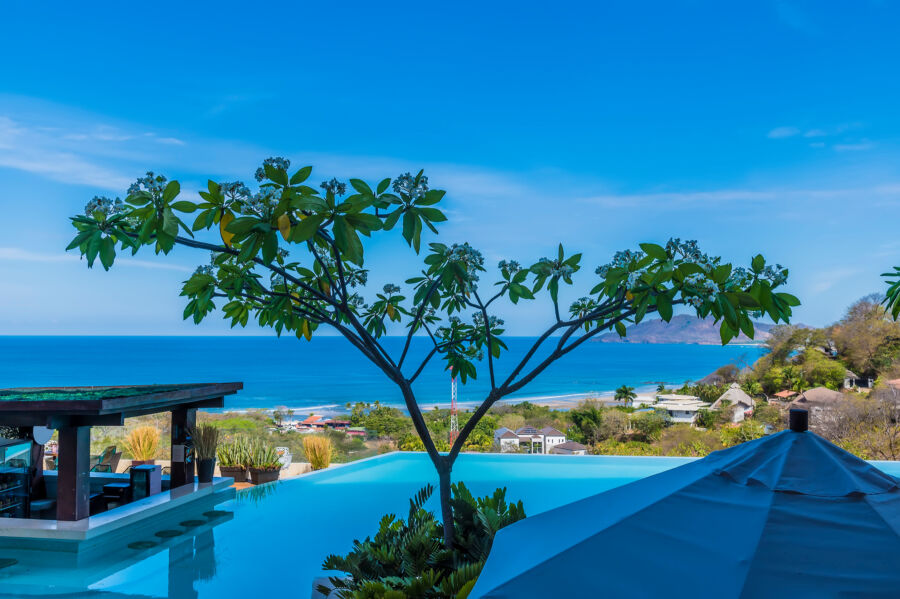
Where you stay can greatly impact your Costa Rica experience. Tamarindo and Manuel Antonio offer distinctive lodging choices catering to different preferences and travel styles.
Hotels and Resorts
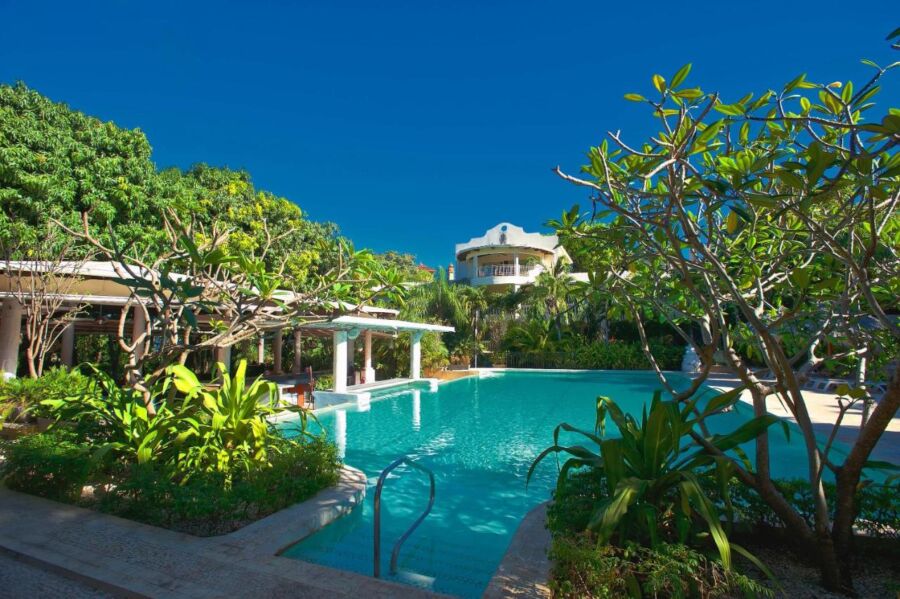
Tamarindo shines with its beachfront accommodations. Many hotels sit right on the sand, making it perfect for beach lovers who want to wake up to ocean views. The Tamarindo Diria is a popular beachfront resort with easy access to the ocean and town amenities.
Most Tamarindo hotels place you within walking distance of restaurants, bars, and shops. This convenience means less driving and more time enjoying vacation activities.
Meanwhile, Manuel Antonio offers a different experience. Most accommodations perch on hillsides rather than directly on the beach. This elevated position provides stunning panoramic views of the ocean and jungle.
Hotel La Mariposa exemplifies this style with its dramatic clifftop location. The trade-off is that reaching the beach often requires a short walk or shuttle ride.
Cabins and Boutique Stays

Manuel Antonio excels in unique, intimate lodging options. The area features numerous boutique hotels nestled into the rainforest, where guests might spot monkeys and sloths from their balconies.
These smaller properties often create memorable experiences through personalized service and distinctive designs that blend with the natural surroundings.
Tamarindo has fewer cabin-style accommodations but compensates with charming boutique hotels. These properties typically offer a more relaxed vibe than the larger resorts.
Both destinations provide options with local flair for travelers seeking authentic Costa Rican characters, though Manuel Antonio tends to emphasize jungle immersion while Tamarindo focuses on beach accessibility.
Dining and Nightlife

Tamarindo and Manuel Antonio offer unique food scenes and evening entertainment options reflecting their distinct atmospheres. The dining experiences range from local cuisine to international offerings, while nightlife varies from relaxed beach bars to more energetic establishments.
Local Cuisine and Gourmet Experiences
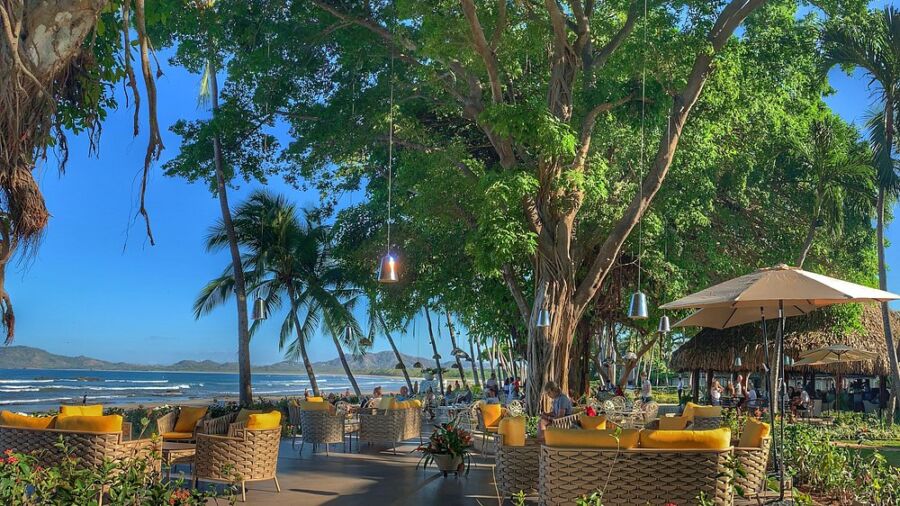
Tamarindo boasts a more developed restaurant scene with numerous dining options. You’ll find everything from beachfront seafood spots to upscale international restaurants. The town has attracted chefs from around the world, creating a diverse culinary landscape that caters to various tastes and budgets.
Many restaurants in Tamarindo offer ocean views where you can enjoy fresh catch-of-the-day dishes while watching the sunset. Local sodas (small family-run restaurants) serve authentic Costa Rican dishes at affordable prices.
Meanwhile, Manuel Antonio’s dining scene is smaller but still impressive. Restaurants are often perched on hillsides offering stunning jungle and ocean views while dining. The area emphasizes fresh seafood and fusion cuisine that incorporates local ingredients.
The restaurants in Manuel Antonio tend to be more integrated with nature, providing unique dining experiences where monkeys and sloths might be visible while you eat.
Bars and Evening Entertainment
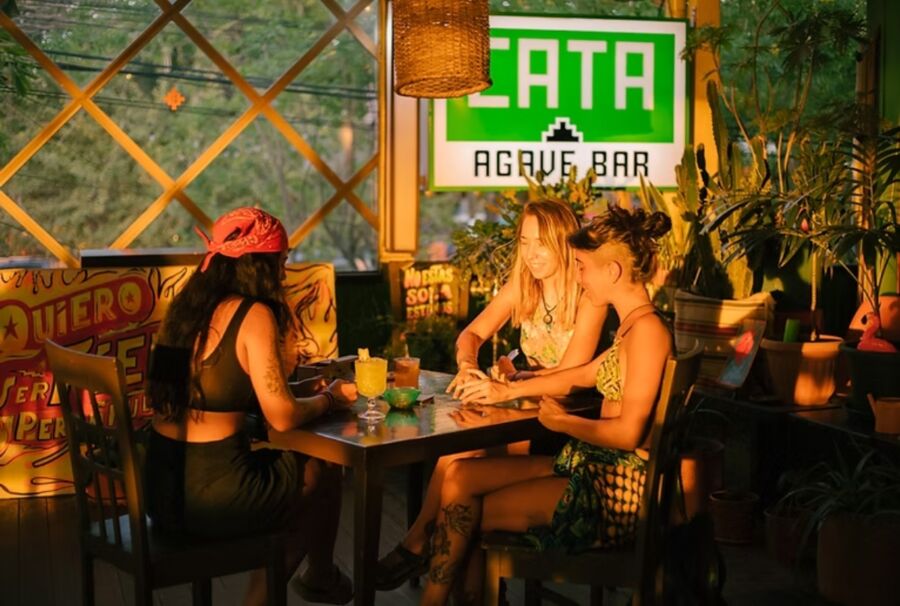
Tamarindo definitely takes the lead when it comes to nightlife. The town has a centralized area with numerous bars, clubs, and discos that stay open late. Beach bars offer live music, fire shows, and dancing under the stars.
Tamarindo pulsates with energy during high season as travelers and locals mix in various venues. You might find everything from laid-back surfer bars to more sophisticated cocktail lounges.
In contrast, Manuel Antonio offers a more relaxed approach to evening entertainment. The nightlife scene here is quieter and less concentrated. Instead of wild parties, you’ll find cozy bars with stunning views and a more intimate atmosphere.
Many establishments in Manuel Antonio focus on sunset cocktails and dinner service rather than late-night partying. This creates a perfect environment for couples or travelers seeking a more tranquil evening experience.
Cultural and Natural Significance
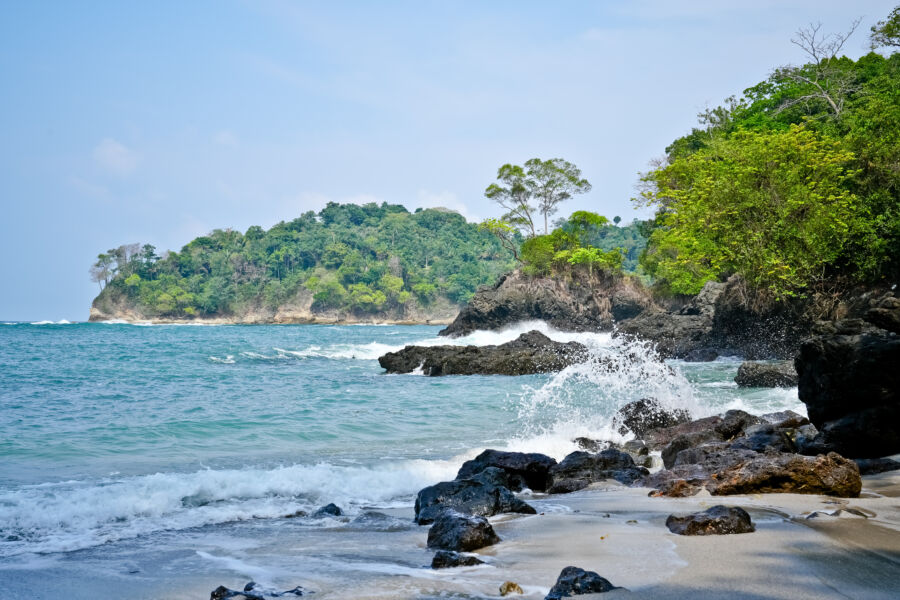
Both destinations showcase Costa Rica’s commitment to preserving natural wonders while maintaining vibrant local cultures. Each area offers unique wildlife encounters and community experiences that reflect the country’s “Pura Vida” lifestyle.
National Park and Conservation Efforts
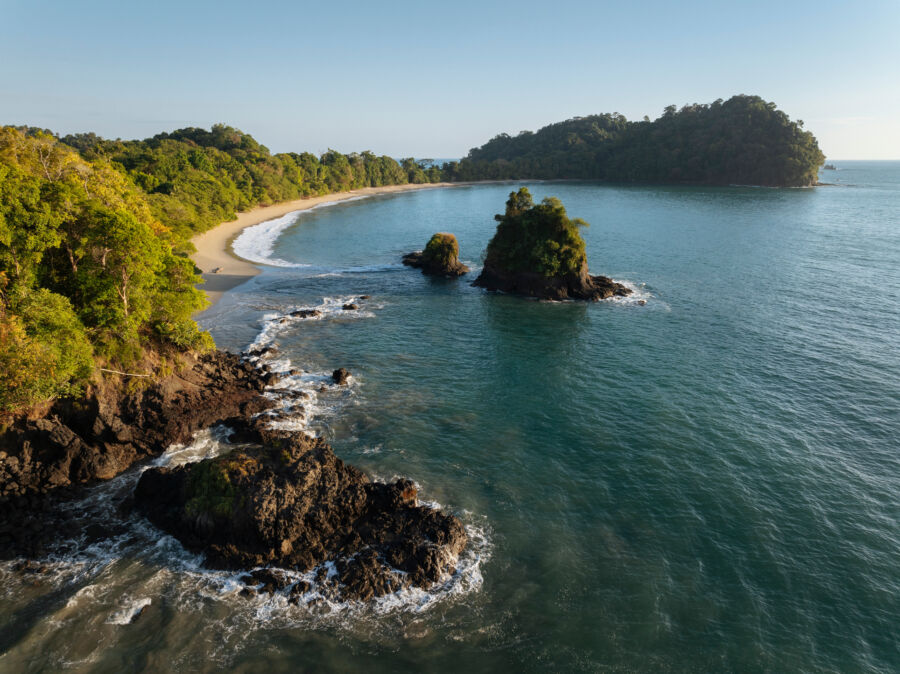
Manuel Antonio National Park is often described as a crown jewel of Costa Rica’s conservation system. Despite being one of the country’s smallest parks, it boasts incredible biodiversity in a compact area.
The park protects several ecosystems, including rainforests, beaches, and coral reefs. Visitors regularly spot white-faced capuchin monkeys, two-toed and three-toed sloths, and colorful birds like toucans. The mischievous raccoons are known for trying to steal unattended belongings on the beach!
While Tamarindo doesn’t have a local national park, it serves as a gateway to Las Baulas National Marine Park. This protected area is crucial for leatherback turtle conservation. From October to March, visitors can witness these magnificent creatures nesting in nearby Playa Grande.
Both areas support marine conservation efforts. Manuel Antonio offers seasonal whale watching, while Tamarindo’s estuaries provide habitats for crocodiles and numerous bird species.
Local Traditions and Community

Tamarindo embraces its reputation as a surf town with a vibrant international community. The local culture blends traditional Costa Rican values with global influences from expats and long-term visitors.
Street vendors, artisan markets, and beachfront restaurants showcase local crafts and cuisine. Surfing isn’t just a tourist activity but a way of life that brings together locals and visitors.
Meanwhile, Manuel Antonio feels more traditionally Costa Rican despite its tourism development. The area maintains stronger ties to indigenous heritage and rural traditions. Local fishing remains important to the community’s identity and economy.
Both destinations celebrate cultural festivals throughout the year. Tamarindo hosts surf competitions and beach parties, while Manuel Antonio participates in traditional Costa Rican celebrations like the annual Palmares Festival, which includes rodeos, music, and dance.
See Related: The Most Undiscovered Places in the World: Exploring Hidden Gems Off the Beaten Path
Practical Information for Tourists
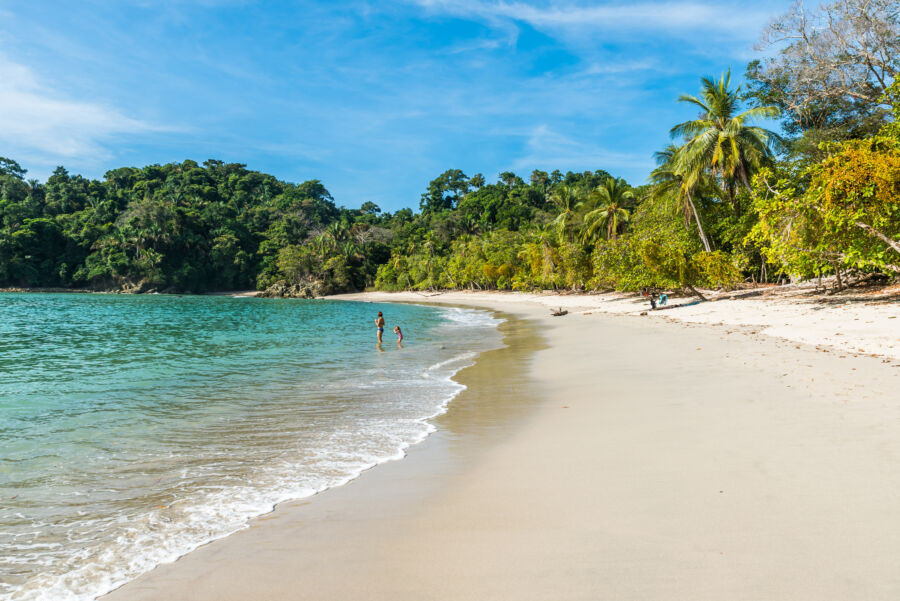
Planning your visit to either Manuel Antonio or Tamarindo requires some practical knowledge. Both destinations have different logistics when it comes to getting there, staying healthy, and finding services during your trip.
Travel and Transportation

It takes about 2.5-3 hours to drive from San José to Manuel Antonio, while Tamarindo is a longer 4-5 hour drive. Many travelers choose to take domestic flights to save time. Both destinations have nearby airports with regular connections from the capital.
Rental cars give you the most flexibility for exploring nearby attractions. From Manuel Antonio, day trips to Dominical (45 minutes south) are popular for its laid-back surfing vibe. Tamarindo serves as a great base for exploring the Nicoya Peninsula’s beautiful beaches.
Public buses connect both destinations to major cities, though schedules can be limited. Shared shuttle services offer a comfortable middle ground between public transit and private transfers, typically ranging from $50-60 per person.
Taxis are readily available in both areas for getting around locally. Manuel Antonio has a convenient public bus that runs every 30 minutes between the town center and the national park entrance.
Health and Safety Tips
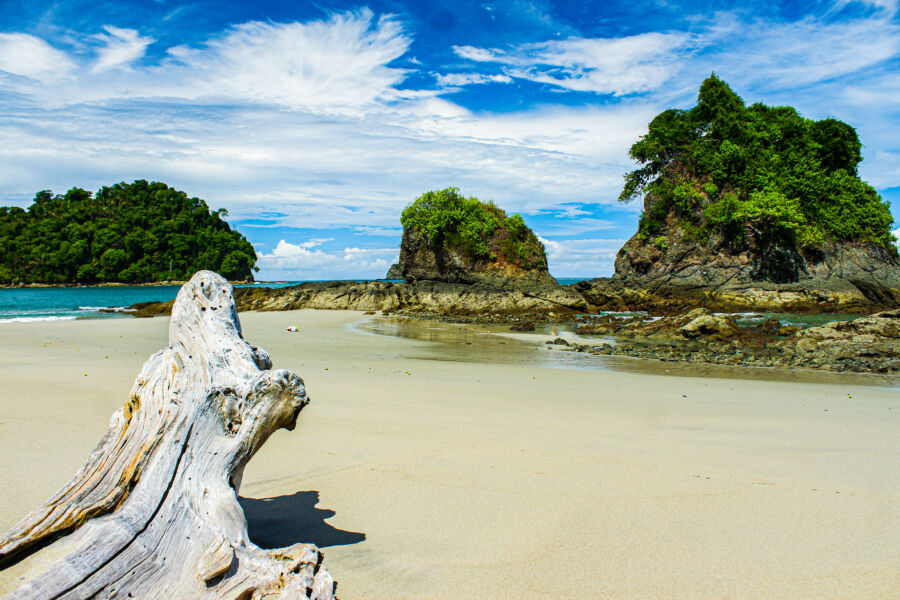
Both destinations are generally safe for tourists, but they should keep valuables secured and avoid displaying expensive items, especially on beaches.
Sun protection is essential in both locations. The Costa Rican sun is intense year-round, even on cloudy days. Pack high-SPF sunscreen, hats, and lightweight clothing with UV protection.
During the rainy season (May-November), bring insect repellent as mosquitoes become more prevalent. Consider products containing DEET for better protection against mosquito-borne illnesses.
Drinking water is generally safe in major tourist areas, but bottled water is widely available if you’re concerned. Stay hydrated, as the tropical climate can lead to quick dehydration.
Medical facilities in both regions can handle minor issues, but serious conditions might require transport to San José. Travel insurance with medical coverage is strongly recommended before visiting Costa Rica.
Local Services and Amenities
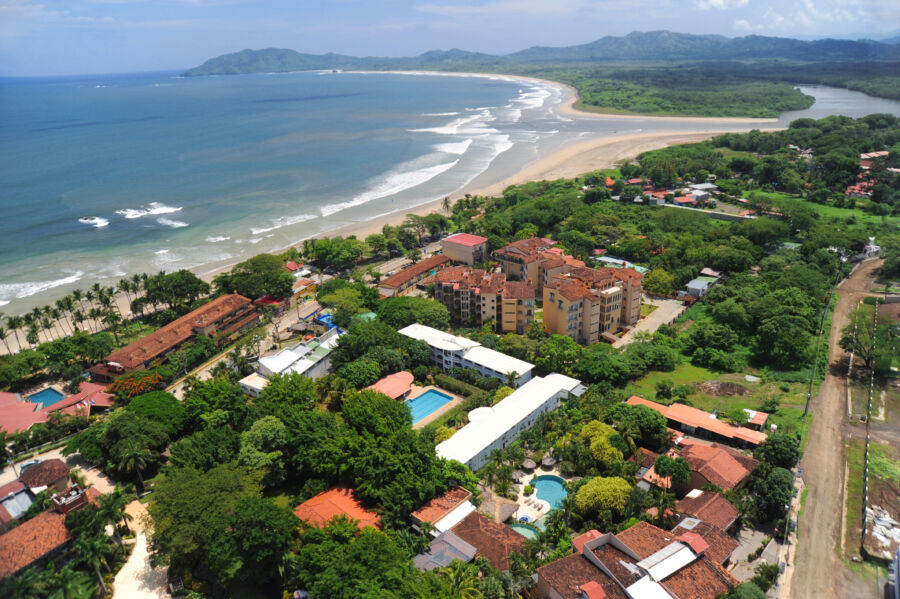
Both destinations offer a good range of services tailored to tourists. ATMs are readily available, though it is wise to carry some cash for smaller establishments. Most places accept credit cards but may charge a small fee.
Both locations have well-stocked grocery stores and pharmacies. Manuel Antonio has several mini-markets along the main road, while Tamarindo offers larger supermarkets with wider selections.
Tour operators abound in both areas, offering everything from guided wildlife excursions to surf lessons. Booking directly with operators often saves money compared to arranging through hotels.
Wi-Fi is widely available in accommodations, restaurants, and cafes. Mobile coverage is generally good in populated areas but can be spotty in remote locations or inside the national park.
Laundry services are available through most hotels or dedicated laundromats in town centers. Depending on the service level, they typically charge $5-10 per load.
See Related: Best Vacation Destinations for Singles Over 40
Frequently Asked Questions

When deciding between these two popular Costa Rican destinations, travelers often have specific questions. Each location offers unique experiences that appeal to different types of vacationers.
What are the key differences in wildlife and nature experiences between Tamarindo and Manuel Antonio?
Manuel Antonio is the clear winner for wildlife enthusiasts. The national park is home to monkeys, sloths, colorful birds, and countless other species visible on guided walks through the preserved rainforest.
Tamarindo offers some wildlife viewing, particularly at nearby reserves like Las Baulas National Park, where sea turtles nest. However, the experience is less immersive than Manuel Antonio’s dense jungle setting.
The beaches in Manuel Antonio are framed by lush forests, creating a unique ecosystem where monkeys might join you during beach time. Tamarindo’s natural experiences tend to be more separated from its main beach areas.
How do travel times and transportation options compare when traveling from Monteverde to Tamarindo versus Monteverde to Manuel Antonio?
The journey from Monteverde to Tamarindo is typically shorter than the journey to Manuel Antonio. Depending on road conditions, expect a 3-4 hour drive to Tamarindo.
Getting to Manuel Antonio from Monteverde usually takes 4-5 hours. Both routes involve winding mountain roads before reaching coastal highways.
Transportation options for both destinations include private shuttles, public buses, and rental cars. Shuttle services are widely available but should be booked in advance during high season.
How do Tamarindo and Manuel Antonio differ in terms of beach quality and water activities?
Tamarindo boasts wide, expansive beaches with consistent waves, making it a premier surfing destination. Surf schools are available for beginners, while experienced surfers enjoy challenging breaks.
Manuel Antonio’s beaches are smaller and more secluded, nestled between forested headlands. The waters are generally calmer, making them better for swimming and snorkeling.
Playa Espadilla in Manuel Antonio offers gentler waves and stunning jungle backdrops. Tamarindo’s beaches have more open space for activities like beach volleyball and kitesurfing.
Can you compare the range of accommodations available in Manuel Antonio to those in Tamarindo?
Manuel Antonio features many boutique hotels and luxury resorts built into the hillsides with stunning ocean views. These accommodations often blend into the natural environment.
Tamarindo offers a wider range of options, from budget hostels to luxury beachfront resorts. The town’s development means more choices at various price points.
Both locations offer family-friendly resorts, but Tamarindo offers more condo-style accommodations perfect for longer stays. Manuel Antonio excels at unique eco-lodges and rainforest retreats.
What distinguishes the nightlife and dining scenes when comparing Tamarindo to Manuel Antonio?
Tamarindo boasts a more vibrant nightlife with numerous bars, clubs, and restaurants along its main strip. The atmosphere is livelier, especially during peak tourist season.
Manuel Antonio’s dining scene is more relaxed and spread out, with restaurants often featuring spectacular sunset views from hillside locations. Seafood is exceptional in both destinations.
How does the overall atmosphere and type of tourist experience in Manuel Antonio contrast with that of Tamarindo?
Manuel Antonio provides a nature-immersion experience where wildlife viewing and rainforest exploration take center stage. The pace is generally more relaxed and focused on natural beauty.
Tamarindo has a more developed beach town vibe with surfing culture, shopping, and social activities. It attracts a mix of surfers, young travelers, and families looking for convenience.
First-time visitors to Costa Rica often prefer Manuel Antonio for its iconic rainforest-meets-beach experience. Meanwhile, Tamarindo appeals to return visitors and those seeking a more action-packed beach vacation with plenty of amenities.
